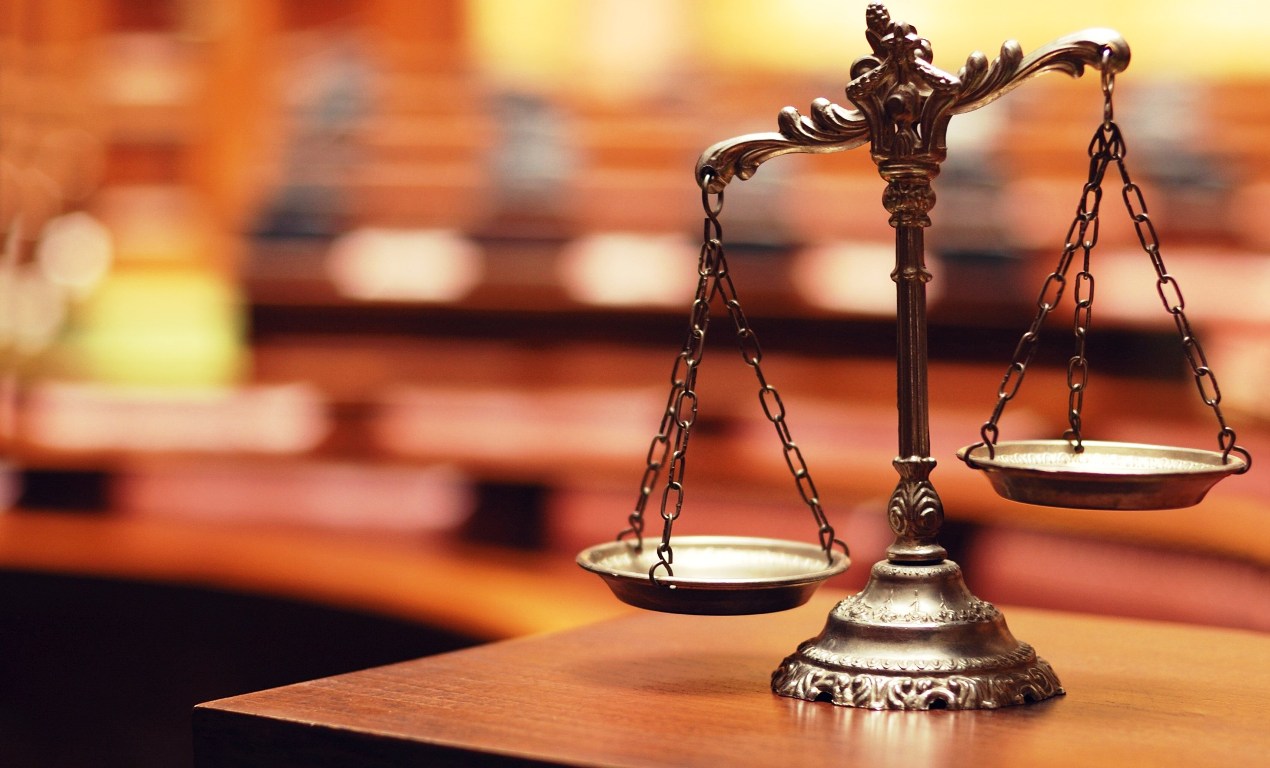by Mudasir Mushtaq Khan
Social justice ought to be a guideline in governance and policymaking, with governments striving to combine it into each resolution. The pursuit of a welfare state and constitutional beliefs hinges on the state’s dedication to implementing social justice with a robust ethical sense.

The Oxford English Dictionary defines justice because the “administration of legislation or fairness.” This idea, important to civilisation and society, is deeply rooted in Indian civilisation. Originating from the French phrase Jostise, which means righteousness, fairness, and the administration of legislation, justice entails the proper utility of the legislation, rejecting arbitrariness. A society’s basis is incomplete with out the presence of justice, a cornerstone of any nation.
The Structure of India, adopted by the constituent meeting on November 26, 1949, and enacted on January 26, 1950, declares India a Sovereign Socialist, Secular, Democratic Republic dedicated to Justice, Equality, and Liberty for its folks. The preamble serves as a concise introductory assertion, outlining the doc’s beliefs and goals, deriving its authority from the folks. At independence, the framers of the Structure had been pushed by a profound sense of social equality and justice, mirrored in its provisions, shaping India right into a social welfare state.
Based on the United Nations, social justice encompasses the truthful and compassionate distribution of financial progress’s advantages. Put merely, it entails guaranteeing a good and equitable allocation of sources, alternatives, and privileges inside society.
Embedded inside the Structure, the idea of social justice encompasses various rules important for the orderly progress and improvement of each citizen’s character. Social justice is thus an integral side of justice in its broadest sense, with the time period socialist intentionally included within the Preamble.
Within the case of Excel Put on v. Union of India on September 29, 1978, the Supreme Court docket underscored the importance of the time period socialist within the Preamble. The court docket indicated that whereas this addition would possibly incline in direction of nationalization and state possession of industries, it shouldn’t disregard the pursuits of personal house owners totally if personal possession exists alongside rules of socialism and social justice.
Additional elaborating on the goals of a socialist state, the Supreme Court docket, in DS Nakara v. Union of India & others on December 17, 1982, said that the first purpose of such a state is to eradicate inequality in revenue, standing, and requirements of residing. It emphasised offering an honest way of life, encompassing safety from delivery to demise, financial equality, and truthful revenue distribution, drawing from each Marxist and Gandhian socialism. The transition from a feudal society to a socialist welfare society represents a prolonged development, with every state motion geared toward advancing society nearer to this objective.
The time period justice within the Preamble encompasses social, financial, and political dimensions, safeguarded via varied Basic Rights and Directive Rules. Social justice advocates for equal remedy no matter social components like caste, color, faith, or gender, aiming to uplift backward courses (SCs, STs, and OBCs) and ladies, whereas financial justice targets the discount of wealth, revenue, and property disparities.
The mixture of social and financial justice constitutes distributive justice. Political justice calls for equal political rights and participation for all residents, guaranteeing a good voice in governance. The time period equality inside the Preamble ensures equal standing and alternative for all residents, protecting civil, political, and financial dimensions, as ensured by varied provisions within the chapter on Basic Rights.
The Structure enshrines a number of provisions to uphold equality and political equity:
(a) Equality earlier than the Legislation (Article 14).
(b) Prohibition of discrimination primarily based on faith, race, caste, intercourse, or native land (Article 15).
(c) Equality of alternative in public employment (Article 16).
(d) Abolition of untouchability (Article 17).
(e) Abolition of titles (Article 18).
Two provisions particularly purpose to make sure political equality: firstly, no particular person could be excluded from electoral rolls primarily based on faith, race, caste, or intercourse (Article 325), and secondly, elections to the Lok Sabha and state assemblies are carried out via grownup suffrage (Article 326).
Articles 36 to 51 incorporate directive rules of State coverage, which information governance however will not be legally enforceable (Article 37). These rules, outlined in Half IV of the Structure, span socialist, Gandhian, and liberal mental beliefs, aiming to determine a welfare state and promote social and financial democracy.
The Supreme Court docket, in Minerva Mills & others, and Union of India & Others on July 31, 1980, emphasised the importance of directive rules, noting their pivotal function in reaching the Structure’s goals. The Court docket pressured the steadiness between basic rights (Half III) and directive rules (Half IV), stating that undermining one would disrupt the Structure’s concord and important construction. Social justice, a dynamic mechanism, seeks to alleviate the struggling of marginalized communities and guarantee their equality and dignity, reflecting the legit aspirations of all segments of society.
Reaffirming the constitutional significance of social justice, the Supreme Court docket, in Nagaraj & Others vs Union of India & Others on October 19, 2006, famous that amendments upholding the constitutional beliefs of ‘justice, social, financial, and political,’ and ‘equality of standing’ don’t contravene Article 14 or Article 16(1), and therefore, don’t undermine the Structure’s fundamental construction.
Reflecting on the post-independence period, Justice RP Sethi, in Ramon Companies Pvt.Ltd. vs Shri Subhash Kapoor & Others on September 10, 1999, noticed that social justice has develop into integral to our authorized system, imbuing democracy with which means and dynamism. He emphasised that reaching the welfare state envisioned within the Structure necessitates energetic and concerted efforts in meting out social justice.
Equally, in Som Prakash Rekhi v. Union of India on November 14, 2000,Justice Krishna Iyer portrayed social justice because the conscience of the Structure, with the state serving because the advocate for financial justice. He underscored Indian humanity because the cornerstone sustaining the Structure, asserting the general public sector’s function as a socially accountable employer.
Within the landmark case of SR Bommai v. Union of India, the apex court docket affirmed that social justice and judicial assessment are basic options of the Indian Structure.
Reaffirming the constitutional significance of social justice, the Supreme Court docket, in Nagaraj & Others vs Union of India & Others on October 19, 2006, famous that amendments upholding the constitutional beliefs of ‘justice, social, financial, and political,’ and ‘equality of standing’ don’t contravene Article 14 or Article 16(1), and therefore, don’t undermine the Structure’s fundamental construction.
Reflecting on the post-independence period, Justice R.P. Sethi, in Ramon Companies Pvt. Ltd. vs Shri Subhash Kapoor & Others on September 10, 1999, noticed that social justice has develop into integral to our authorized system, imbuing democracy with which means and dynamism. He emphasised that reaching the welfare state envisioned within the Structure necessitates energetic and concerted efforts in meting out social justice.
Equally, in Som Prakash Rekhi v. Union of India on November 14, 2000, Justice Krishna Iyer portrayed social justice because the conscience of the Structure, with the state serving because the advocate for financial justice. He underscored Indian humanity because the cornerstone sustaining the Structure, asserting the general public sector’s function as a socially accountable employer.
Within the landmark case of SR Bommai v. Union of India, the apex court docket affirmed that social justice and judicial assessment are basic options of the Indian Structure.
On November 16, 1992, within the case of Indra Sawhney And so on. vs Union of India And Others, the Supreme Court docket upheld the legality of a 27 per cent reservation for socially and economically backward courses in central companies. This type of protecting discrimination goals to deal with longstanding deprivation, constituting a side of corrective and compensatory justice. It acknowledges that sure segments of society have traditionally suffered injustice, whereas others have unjustly benefitted, resulting in systemic disparities. The supply of protecting discrimination seeks to redress these inequities for these residing in deprived circumstances, aiming to strike a steadiness between equal alternative and distributive justice.
Our judiciary serves because the guardian of justice, guaranteeing the fulfilment of the constitutional promise. In Individuals’s Union for Democratic Rights vs Union Of India & Others on September 18, 1982, the apex court docket asserted that denying minimal wages quantities to a violation of human dignity and constitutes exploitation. The Indian courts have performed a pivotal function in advancing social justice, significantly via distributive and compensatory measures, recognizing these rules as complementary somewhat than contradictory. Whereas the idea of social justice lacks a exact definition, the Supreme Court docket has affirmed its important function inside the authorized framework, shaping it as a guiding pressure via dynamic judicial pronouncements.
In Harjinder Singh vs Punjab State Warehousing Corp. on January 5, 2010, the Supreme Court docket emphasised the vital function of judges, significantly these of the very best court docket, in guaranteeing the fulfilment of constitutional guarantees. Failure to actively pursue the conclusion of those guarantees undermines the judiciary’s oath to uphold the Structure, equating to a failure within the court docket’s conscience.
Based on Article 38 of the Structure, each the State and the judiciary bear an obligation to determine a social order conducive to the welfare of the folks. Article 38(1) emphasizes the crucial to advertise social, financial, and political justice, echoing the emotions of the preamble.

In conclusion, social justice, as enshrined within the preamble, addresses a broad spectrum of points, advocating for the equitable remedy of all people irrespective of varied components. It’s important for guaranteeing a significant life with peace and dignity for each citizen. Realizing this imaginative and prescient requires systemic and ideological shifts throughout financial, social, academic, and governmental establishments. Social justice ought to be a guideline in governance and policymaking, with governments striving to combine it into each resolution.
The pursuit of a welfare state and constitutional beliefs hinges on the state’s dedication to implementing social justice with a robust ethical sense. Reaching this objective necessitates a balanced and efficient implementation of insurance policies aligned with the preambular promise of social justice, thereby realizing the dream of a simply, truthful, and welfare-oriented society.
(The writer serves as a Authorities Legislation Officer inside the Division of Legislation, Justice & Parliamentary Affairs, Jammu & Kashmir, presently pursuing a Masters in Political Science via the Indira Gandhi Nationwide Open College. Concepts are private.)
#Social #Justice #Constitutional #Crucial #Shaping #Indias #Authorized #System

